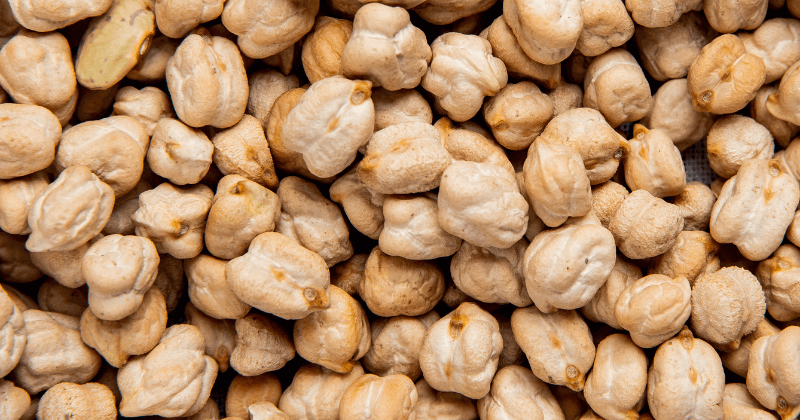How Much Chana Do You Need for 20g Protein?
Chana, also known as chickpeas or Bengal gram, is a powerhouse of nutrition that has been a staple in Indian kitchens for centuries.
From traditional dal preparations to modern protein powders, chana is a versatile and affordable source of high-quality protein.
If you’re looking for a natural way to get 20 gm of chana protein daily, you’ve come to the right place.
This guide will explore everything about chana protein, its benefits, and how you can incorporate it into your daily diet.
20 Gm Chana Protein
Chana, also known as chickpeas or garbanzo beans, is a staple in Indian cuisine.
20 grams of chana (chickpeas) provide about 3.8–4.2 grams of protein, depending on whether they are raw, boiled, or roasted.
Whether it’s chana masala, hummus, or chana chaat, this legume is not only delicious but also packed with nutrients.
Nutritional Breakdown of Chana (Per 100 gm Cooked)
-
Protein: 20 gm
-
Fiber: 12 gm
-
Carbs: 61 gm
-
Fat: 6 gm
-
Iron: 4.7 mg (26% DV)
-
Folate: 557 mcg (139% DV)
Unlike animal-based proteins, chana provides fiber, complex carbs, and essential minerals, making it a complete food for vegetarians and vegans.
Health Benefits of Consuming 20 GM Chana Protein Daily
Adding 20 grams of chana protein to your daily diet can offer numerous health benefits:
🌟 Muscle Growth and Repair
For fitness enthusiasts and bodybuilders, chana protein helps in muscle repair and growth. It provides a plant-based alternative to whey and casein protein powders.
🌟 Weight Management & Fat Loss
Chana is high in protein and fiber, keeping you fuller for longer. This reduces overall calorie intake, aiding in weight loss.
🌟 Regulates Blood Sugar Levels
The complex carbohydrates in chana release energy slowly, preventing blood sugar spikes. It is highly beneficial for diabetics.
🌟 Boosts Digestive Health
Chana contains a high amount of fiber that promotes gut health and prevents constipation.
🌟 Supports Heart Health
The presence of magnesium and potassium in chana helps regulate blood pressure and reduces the risk of heart disease.
How to Get 20 GM Chana Protein in Your Diet?
Soaked Chana
Soaking black chana overnight and consuming it in the morning is a great way to absorb its nutrients efficiently.
-
1 cup soaked black chana (~100g) = 19-20g protein
-
Can be eaten plain or with a dash of lemon and salt
Roasted Chana
Roasted chana is a crunchy, protein-packed snack that can be eaten on the go.
-
1 cup roasted chana (~100g) = 20g protein
-
Pair it with jaggery (gur) for an energy boost
Chana Dal
Chana dal can be cooked as dal, added to curries, or even made into chilla (savory pancakes).
-
1 cup cooked chana dal (~150g) = 15-16g protein
-
Pair it with chapati or rice for a wholesome meal
Sprouted Chana
Sprouting increases nutrient absorption and enhances protein content.
-
1 cup sprouted chana (~100g) = 18-20g protein
-
Can be eaten raw, in salads, or lightly sautéed
Besan (Gram Flour) Recipes
Besan is made from ground chana and can be used in multiple dishes like chilla, dhokla, or pakoras.
-
1 cup besan (~100g) = 22g protein
-
Use besan in high-protein recipes like besan pancakes or cheela
Best Combinations for Maximum Protein Absorption
Since chana lacks methionine, pairing it with complementary protein sources helps complete the amino acid profile:
-
Chana + Rice: Eating chana dal with rice balances the amino acids.
-
Chana + Dairy: Adding curd or paneer to a chana meal boosts protein quality.
-
Chana + Nuts & Seeds: Combining with almonds, flaxseeds, or peanuts enhances the nutrient profile.
-
Chana + Vegetables: Eating chana with spinach, tomatoes, and carrots ensures better vitamin absorption.
Chana vs. Other Protein Sources: Which One is Better?
Here’s how chana protein compares to other protein sources:
| Protein Source | Protein Content (per 100g) | Vegan/Vegetarian | Cost-Effective |
|---|---|---|---|
| Chana (Raw) | 19-20g | Yes | Yes |
| Paneer | 18g | Yes | No |
| Eggs | 13g | No | Yes |
| Chicken Breast | 31g | No | No |
| Tofu | 8g | Yes | Yes |
| Lentils (Dal) | 9g | Yes | Yes |
While animal proteins like chicken have higher protein content, chana is an excellent plant-based alternative that is more affordable and suitable for vegetarians and vegans.
Precautions & Potential Side Effects of Consuming Too Much Chana
While chana is highly nutritious, consuming it in excess can have some drawbacks:
✔️ Digestive Issues
Too much fiber can cause bloating, gas, and stomach discomfort. Start with small portions and gradually increase intake.
✔️ Anti-Nutrients in Raw Chana
Raw chana contains certain compounds (like phytates) that can reduce mineral absorption. Soaking, sprouting, or cooking helps neutralize these.
✔️ Oxalate Content
Chana contains oxalates, which may contribute to kidney stones in individuals prone to them. If you have kidney issues, consult a doctor before increasing intake.
✔️ Excess Caloric Intake
While high in protein, chana also contains carbohydrates. If you’re on a strict low-carb diet, balance your portions accordingly.
Conclusion
Chana is one of the best natural protein sources available in India, offering a perfect blend of nutrition, affordability, and versatility.
Whether you're aiming for muscle gain, weight loss, or simply a healthier lifestyle, getting 20 gm of chana protein daily is easy and effective.
By incorporating soaked chana, roasted snacks, besan recipes, or chana dal into your meals, you can enjoy its immense benefits without breaking the bank.
Start making chana a part of your daily diet and witness the transformation in your health. Have a favorite chana recipe? Share it in the comments below!
